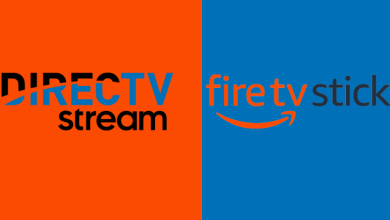The modern office environment has transformed in recent years; it is no longer just chairs and desks. The development of technology, new computer equipment, and the infrastructure associated with them have made tech support checklist a necessity for every small business or large corporation.
Setting up tech support can be daunting and costly, but an ultimate tech support checklist will help provide a valuable overview of the entire process. This comprehensive guide offers you plenty of information, including preparation, setting up, testing, training on-site personnel , and solutions on customer service related to IT support services.
Contents
Initial Setup Checklist
When starting any project, it is essential to carefully plan all the necessary steps before fully committing yourself or investing in expensive equipment. Writing out a checklist of items that must be completed before considering further plans is an essential part of this process. Here’s what should be included in yours:
- Determine needs: What technology do you need? How much does it cost? Are there any potential upgrades or changes needed? Will additional IT personnel or services be required for setup and maintenance?
- Budgeting: Is there enough budget allocated for technological requirements such as software licenses and cloud storage fees?
- Business continuity plan: Does your team have a clear plan if something goes wrong with one piece of technology, such as power cuts? Have they thought about how data will remain accessible if anything happens?
Design Your Office Floor Plan
Now that you’ve figured out your needs and budget, you can start designing the layout of your office. Start by sketching a rough floor plan on paper and determine where the server and conference room should be located and other essential items such as printers, fax machines, and copiers.
When designing the layout, think about how each piece of furniture will be arranged, where outlets are located, if there is enough natural light in certain areas, and any potential fire hazards, such as space heaters being too close to desks.
Additionally, consider traffic flow; hallways and walkways should be wide enough for people to move around easily but not so wide that they feel disconnected from their colleagues.
Choose Your Internet Provider
Once you have finalized your floor plan and determined what technology will go into each room, it is time for one of the most critical steps, choosing your internet provider.
This can often be challenging as many providers offer different speeds at varying prices; take some time researching local options and talking to friends or family who has already successfully gone through this process before committing yourself financially.
It may also help if you speak directly with customer service representatives from multiple ISPs (internet service providers). This way, they can explain more clearly what packages best suit your needs compared to just reading off their website information which often isn’t comprehensive enough.
Wiring and Cabling
Having a functional wiring system within your office is essential for all electrical appliances and gadgets to work correctly. Ensure all wires meet safety regulations and any additional outlets needed are installed before connecting anything.
You must also check how many outlets are available in each room and ensure they are correctly labeled. You can easily identify the device connected to the outlet without unplugging everything again.
Focus on the IT Setup
Once all of the necessary wiring and plugging in has been taken care of, it’s time to focus on setting up the IT infrastructure for your office. This will include servers, routers, printers and scanners, switches, copiers, UPS (uninterrupted Power Supply), and computer workstations.
You can consider using outsourced IT services if you don’t have prior experience configuring such equipment. Make sure that any warranties given are transferable if you decide to switch providers and equipment in the future.
Evaluate Your IT Infrastructure
Your IT infrastructure must be set up correctly, regularly maintained, and fit for your business. Most small businesses assume they can still use their home IT equipment in the office, forgetting that businesses need more storage and better-performing tech appliances for maximum productivity.
Failure to conduct regular maintenance could cost you more money than anticipated due to unexpected outages or hardware failures caused by a lack of care, such as dust buildup inside computers.
Therefore, assign someone within your team to periodically check the server logs and performance data and fix any potential issues early on before they become bigger problems.
Some of the factors to consider when evaluating your office IT infrastructure include the following:
- Ensure you have the latest drivers installed
- That your devices are compatible with each other
- You can hire professionals to do the installation
- That all your devices have warranty and service contracts
Insurance
You should also consider buying insurance plans for your IT equipment. Although expensive, it will save you lots of headaches if theft or damage occurs.
Security System
The security system should be one of the first items addressed when setting up new office space. This depends on the size and complexity of the organization. The larger the organization, the varying levels of security are needed, with the basics being fire alarms and smoke detectors, which should at least be present regardless of whether it’s required by law.
You can also invest in CCTV surveillance systems. These serve as deterrents against intruders and provide additional evidence if something does happen. However, they are expensive but well worth it.
Technology Closet
If you are installing multiple pieces of technology to be used within the office, create a dedicated closet where you can keep all the cables, wires, and related items. This helps keep things organized while still being easily accessible.
You should also consider having a few essential tools, such as screwdrivers, here so any minor repairs can be made without calling outside help, thus saving time and money. Plus, it’ll give the staff confidence knowing they can handle small tasks in-house.
Communication System
A reliable communication system is essential for employees to stay connected and collaborate on projects. This could involve anything from phone systems to internet connections through wired or wireless networks depending upon the size of the company.
Plus, remember other essential elements like voicemail boxes, if applicable. Be sure to evaluate the overall costs associated with setting up these services before applying for any subscription. Ensure there are no hidden fees you weren’t aware of at the start. Your bill could snowball over time, so it’s always worth double-checking.
Softwares
Technology isn’t just hardware; the software also plays an integral role in running a business successfully. So, you must decide which operating systems will be used based on business needs, then look into various applications needed daily, such as Microsoft Office 365 Suite and Adobe Creative Cloud.
Ensure the licenses are transferable between computers should the need arise but more importantly, keep track of who owns what programs in case problems occur in the future.
The Cloud
The cloud is a great way to store data securely while ensuring it’s available whenever needed, no matter where you are. Consider subscribing to a cloud service provider and creating backups regularly. This way, you will have less to worry about if something goes wrong with your office equipment or your network connection suddenly fails mid-project.
Furthermore, some providers offer additional functionality, such as collaboration tools that allow multiple users to access the same files simultaneously. This is ideal for teams working across different locations around the world.
Cybersecurity
Cyberattacks are becoming increasingly common nowadays, meaning that cybersecurity should always be taken seriously within organizations of all sizes. You must realize that even small businesses often have valuable information stored online, whether customer records or intellectual property-related items like ideas being developed internally.
Investigate options for implementing robust security protocols to protect against external and internal threats. This involves setting information access protocols.
Employee Training
Once the technological infrastructure has been set up correctly, including secure access points, both physical & digital platforms, it’s necessary to ensure that your employees receive appropriate training on using the tools provided.
They must also understand how to use the computer to complete tasks assigned efficiently using correct applications safely while adhering to the company policies while respecting their customers’ privacy and rights.
Remember to enroll them in regular refresher courses. These are beneficial as they help promote a culture of trustworthiness amongst employees, which is key to retaining a loyal client base.
IT Support Services
After everything else has been considered, remember to hire an IT support services team. This ensures you get your problems addressed instantly to avoid disrupting your organization’s workflow. Thus helping your company avoid potential revenue losses.
Finding the right managed IT service provider is more straightforward thanks to the vast options and resources available online. For seamless integration and continuous operation of your new office’s technology infrastructure, do some research and click for IT services that offer expert assistance and real-time solutions tailored to your specific needs. If you encounter any difficulties, they should be available for consultation and quick fixes.
Final Thoughts
Setting up an office requires considerable thought and effort to ensure a smooth transition before starting operations. The most important aspect is creating a plan and a checklist to ensure you get all the crucial aspects of your setup. With technological advancement, every company must ensure they have all the tech they need to run their business.



